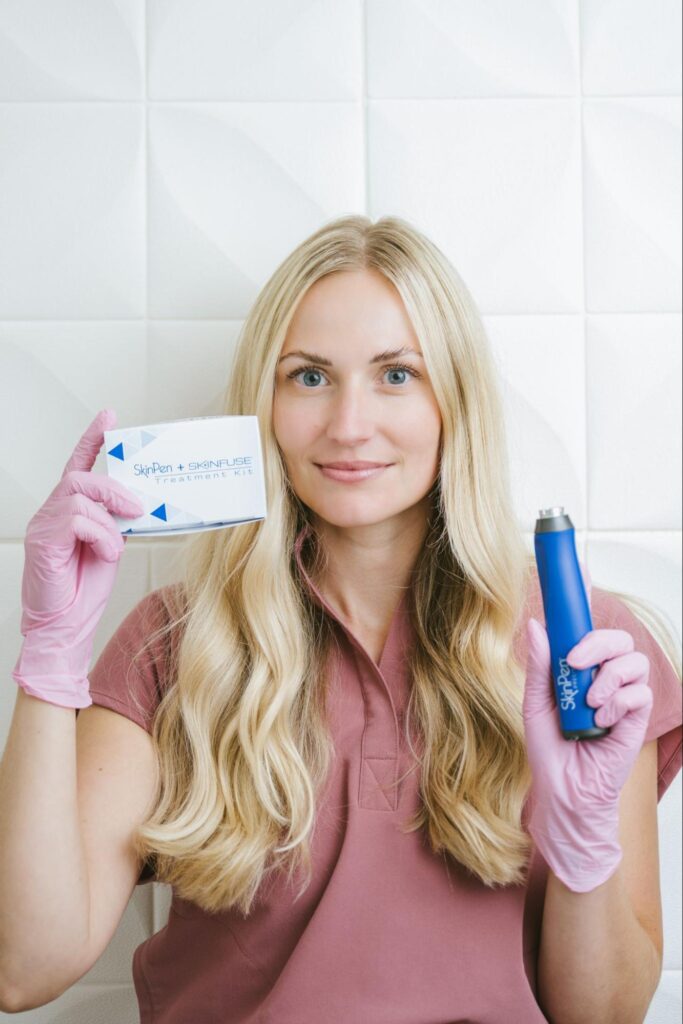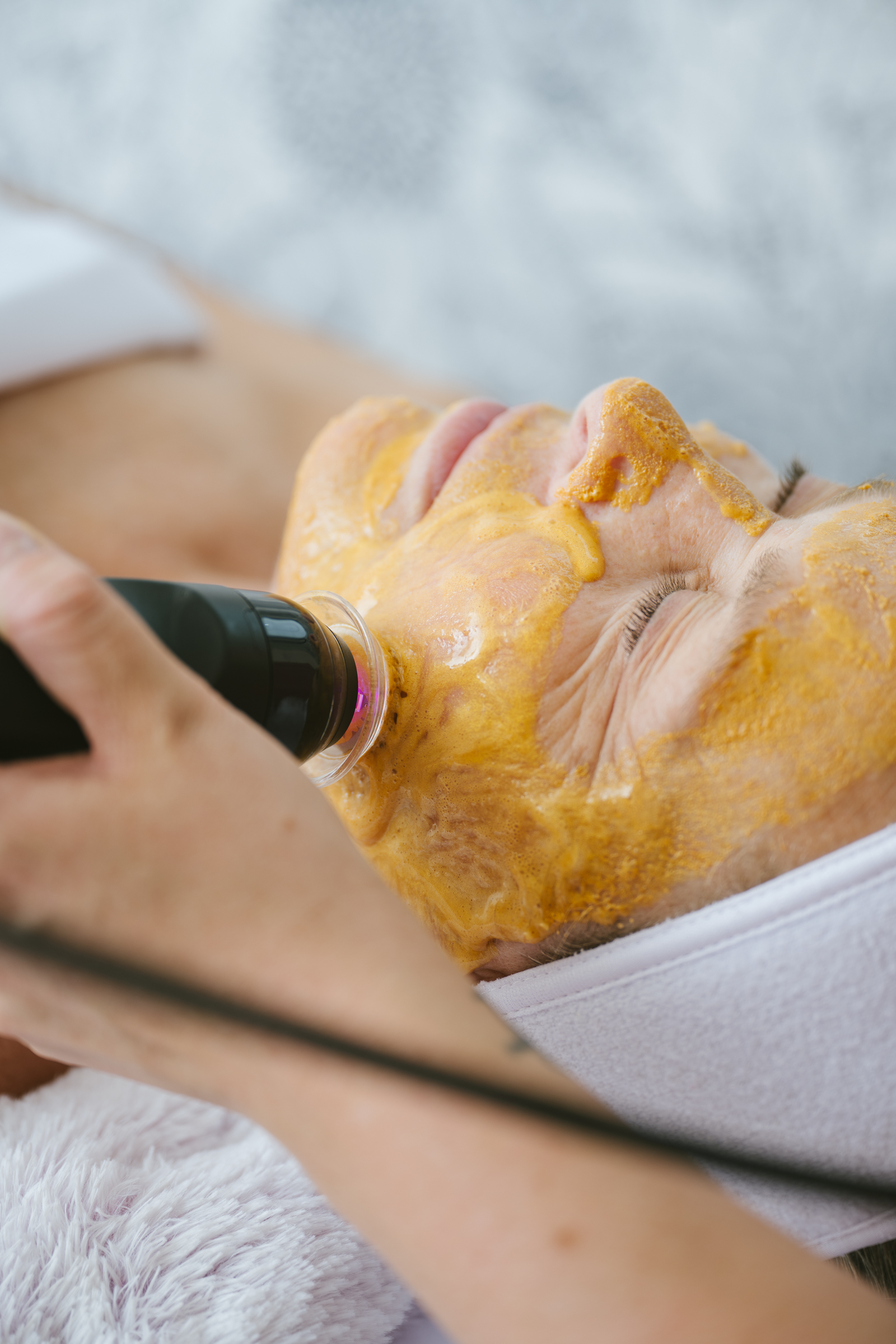Aging is inevitable, but looking older doesn’t have to be. Many factors can make your skin appear less youthful over time, from fine lines and wrinkles to uneven skin texture. Add in environmental stressors like sun exposure and pollution, and the aging process speeds up even faster.
While there is no magic button to stop time, there are advanced treatments that can help rejuvenate the skin and restore a more youthful glow. Microneedling has emerged as one of the most effective solutions for improving skin texture, boosting collagen, and addressing concerns like acne scars and hyperpigmentation.
But if you have sensitive skin, you might wonder—can microneedling work for you? Or will it cause more harm than benefits? If you’ve been hesitant about microneedling because of sensitive skin, read on to learn everything you need to know before booking your appointment.
By the end, you’ll have a clear understanding of how microneedling, specifically with SkinPen®, can work for even the most delicate skin types and enjoy its anti-aging effects.
What Is Sensitive Skin?
Sensitive skin isn’t just about occasional redness or irritation—it is a skin type that reacts easily to external factors such as skincare products, temperature changes, and environmental pollutants.
People with sensitive skin often experience discomfort, inflammation, and dryness more frequently than those with normal or combination skin. Unlike an allergic reaction, which happens due to a specific ingredient, sensitive skin is typically a result of a weakened skin barrier.
This means that the skin is less capable of retaining moisture and protecting itself from irritants, making it more prone to discomfort and visible irritation. But how do you know if your skin is actually sensitive?
Signs That Your Skin Is More Sensitive Than You Think
Many people assume their skin is sensitive without actually knowing for sure. If you regularly experience any of the following signs, it is a good indication that your skin falls into this category:
- Frequent Redness: If your skin often appears flushed, blotchy, or inflamed, even without obvious triggers, it may be sensitive.
- Burning or Stinging Sensations: Some skincare products may cause a tingling, burning, or uncomfortable sensation upon application.
- Dryness or Flakiness: A compromised skin barrier struggles to retain moisture, leading to excessive dryness or peeling.
- Irritation from Common Skincare Ingredients: Sensitive skin may react to fragrances, essential oils, or even active ingredients like retinol and exfoliating acids.
- Reactions to Weather Changes: Exposure to cold wind, hot weather, or excessive humidity can quickly lead to redness, itching, or tightness.
If you resonate with these signs, you likely have sensitive skin and may be concerned about how your skin will react to microneedling. The good news? Microneedling, when done correctly, can actually be beneficial for sensitive skin rather than damaging.

What Is Microneedling?
Microneedling, also known as collagen induction therapy, is a minimally invasive cosmetic procedure designed to boost skin rejuvenation. Using tiny, sterile needles, the SkinPen® device creates controlled micro-injuries in the skin’s surface, prompting the body’s natural healing response.
This triggers the production of collagen and elastin—two key proteins responsible for maintaining firm, youthful skin. Microneedling is widely recognized for its ability to treat various skin concerns, including:
- Wrinkle Reduction: By stimulating collagen production, microneedling helps smooth fine lines and wrinkles.
- Acne Scar Treatment: The micro-injuries encourage new skin cell turnover, improving the appearance of acne scars.
- Skin Resurfacing: Microneedling helps refine texture, reducing rough patches and uneven tone.
- Hyperpigmentation: This treatment is effective in breaking up pigment clusters, leading to a more even complexion.
- Growth Factor Absorption: The micro-channels created during the procedure enhance the penetration of serums, such as PRP (platelet-rich plasma) and growth factors, making them more effective.
But is this treatment safe for people with sensitive skin? Let’s take a closer look.
Is Microneedling Safe for People with Sensitive Skin?
Yes! While it might seem counterintuitive to use a needle-based treatment on sensitive skin, microneedling is actually one of the best treatments for strengthening a compromised skin barrier—as long as it’s done with precision and care.
When performed with SkinPen®, microneedling is controlled, meaning the depth of the needles can be adjusted based on skin type and sensitivity levels. This makes it a customizable and safe option for those prone to redness, irritation, or reactivity.
Additionally, microneedling does not rely on harsh chemicals, heat, or laser energy, making it less likely to cause adverse reactions compared to more aggressive skin treatments like chemical peels or laser resurfacing.
The key is working with a skilled provider who understands how to tailor the procedure to your skin’s needs.
Essential Things to Know About Microneedling
If you have sensitive skin and are considering microneedling, here’s what you need to keep in mind before, during, and after your treatment:
1. Start with a Consultation
A professional consultation is crucial for determining if microneedling is right for you. Your provider will assess your skin’s sensitivity level, review your skincare history, and discuss any past reactions to treatments.
2. Use SkinPen® for the Best Experience
Not all microneedling devices are created equal. SkinPen® is an FDA-cleared microneedling device known for its precision, safety, and effectiveness—especially for sensitive skin. Unlike lower-quality rollers or pens, SkinPen® offers adjustable depths, making the treatment customizable to your skin’s needs.
3. Prepare Your Skin in Advance
Avoid using harsh exfoliants, retinoids, or active skincare products for at least a week before your session. Your skin should be in a calm and hydrated state to minimize irritation and maximize results.

4. Expect Mild Redness Post-Treatment
For those with sensitive skin, temporary redness is normal after microneedling. It typically lasts 24 to 48 hours and fades as your skin begins the healing process. Unlike harsh treatments that can cause prolonged irritation, microneedling’s redness is short-lived.
5. Follow a Gentle Post-Treatment Routine
After your session, stick to hydrating and soothing products. Look for ingredients like hyaluronic acid, ceramides, and peptides to support the healing process. Avoid harsh cleansers, scrubs, and active ingredients like vitamin C or acids for at least a week post-treatment.
6. Protect Your Skin from the Sun
Since microneedling makes your skin more susceptible to UV damage, wearing a broad-spectrum SPF 30+ daily is essential. Even if you are not spending time outdoors, UV exposure from screens and indoor lighting can affect healing.
7. Gradual Improvement, Not Instant Fixes
While you may notice a glow after your first session, the full benefits of microneedling develop over time as collagen production increases. A series of treatments (usually 3 to 6) spaced 4 to 6 weeks apart delivers the best long-term improvements.
Experience the Skin Benefits of Microneedling at Duluth Med Spa
If you have sensitive skin and want a treatment that promotes collagen, reduces signs of aging, and enhances skin texture, microneedling with SkinPen® is a fantastic option. At Duluth Med Spa in Duluth, MN, we specialize in treatments that cater to all skin types, allowing you to enjoy a comfortable and results-driven experience.
There is never been a better time to refresh, rejuvenate, and strengthen your skin’s natural defenses. If you are ready to explore how microneedling can fit into your skincare journey, contact our expert team today to schedule your consultation. Your skin deserves the best!






